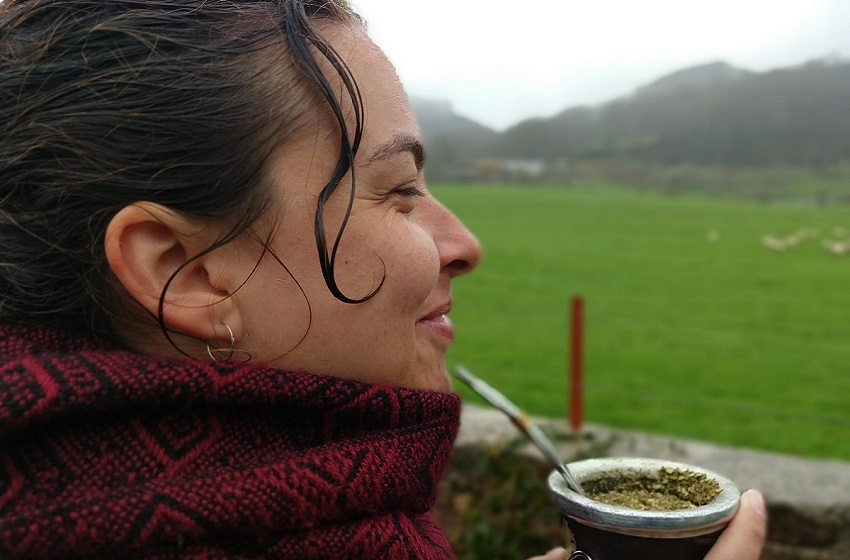Buenos Aires, Argentina. Sacha Miro is from San Nicolas but lives in Buenos Aires where she is part of the Oihankide Taldea. As a member of the group, dantzari and Basque student, Sacha didn’t hesitate in accepting the invitation to deepen her training virtually along with the Aiko Dantza Eskola Digitala. The Dantza Munduan initiative arose by virtue of an agreement between the Directorate for the Basque Community Abroad of the Basque Government and the Aiko Taldea, allowing online Basque dance lessons.
“In my case, I began last December when I received the passwords from Aiko; although really moths before, in March of 2020, I had already taken classes with Aiko on YouTube, in the prior version of their current platform.”
Work Modality
When asked about the options offered by the platform, Sacha explains that she usually takes live classes. “There is also the possibility of consulting extra material, or in the case of the “mutildantzak” that are only recorded, when there is a particular doubt. Because of the time difference, I am not in the advanced live classes, I have watched some recorded ones though, and the difference is that those are in Euskera.”
As a member of the Oihankide Taldea, she feels that the platform works very well. “The various forms to access each dance is very interesting. When I had some connection problems in the beginning they sent me a solution immediately.”
Evaluation
Sacha Miro is very satisfied with her experience. “In Oihankide Taldea, our instructor, Aitor Alava, encourages plaza dantzak so I didn’t start from scratch. Also, when I traveled to the Basque Country I had the opportunity to attend some Aiko dance events and I loved them.”
“I think it is a very good idea for the Diaspora to know about other didactics and to be able to replicate other dantzak from a rhythmic and musical point that not all groups can access. To have an overview of what the dances are really like there. And I think it is a very good idea to make oneself available to take advantage of it free of charge from anywhere in the world.”
It is not easy to combine schedules when students access from different time zones. In this sense, Sacha suggests reviewing the live class schedules and it seems to her that it would be enriching to be able to access a chat with other dancers at any time. Also to open up the possibility of other “special” classes “like when the dance was held at the beginning of the year,” she says.
The result if "frankly positive," she concludes, “and although nothing is comparable to dancing in a group in person, it is a very interesting contribution. Something good had to come out of all of the virtuality which the pandemic and its quarantines have forced on us.”






 Send to a friend
Send to a friend Add comment
Add comment








